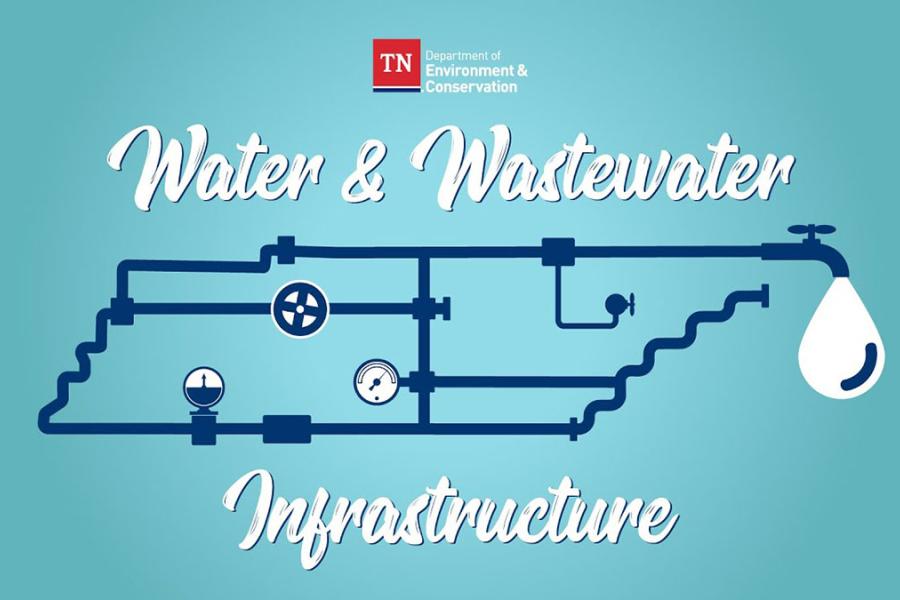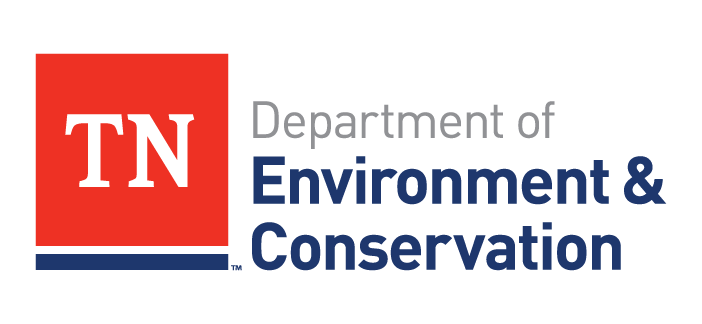TDEC, TAUD to hold workshops in Tennessee Infrastructure Scorecard 2.0

By KATE COIL
TML Communications Specialist
A series of workshops aimed at educating officials on the new Tennessee Infrastructure Scorecard are being held this month.
Officials with the Tennessee Department of Environment and Conservation (TDEC) and Tennessee Association of Utility Districts (TAUD) will be hosting three February workshops aimed at helping officials understand and complete the Tennessee Infrastructure Scorecard 2.0. The scorecard as an integral part of water and wastewater infrastructure projects being conducted with ARP funds, and could play a role in applying for similar funds from programs like the state’s Community Development Block Grant and State Revolving Loan programs.
John Greer, program manager with the TAUD, was working with the Tennessee Comptroller’s Office at the time of the scorecard’s inception.
“It started with groups needing technical assistance,” Greer said. “At the comptroller’s office we were working with the state revolving fund to help these systems, and we realized we didn’t have a great inventory of these systems and a lack of asset management planning for systems that didn’t fall under the comptroller’s office at the time.”
 The first scorecard brought together leadership from the Tennessee Department of Economic and Community Development’s Division of Rural Development, TAUD, TDEC’s Division of Water Resources and Office of Policy and Sustainable Practices. Vena Jones, environmental consultant with the TDEC Division of Water Resources, said 30 water systems were initially approached to serve as a pilot program for this first version of the scorecard.
The first scorecard brought together leadership from the Tennessee Department of Economic and Community Development’s Division of Rural Development, TAUD, TDEC’s Division of Water Resources and Office of Policy and Sustainable Practices. Vena Jones, environmental consultant with the TDEC Division of Water Resources, said 30 water systems were initially approached to serve as a pilot program for this first version of the scorecard.
“During that process, the team came together to better address the needs of small and underprivileged communities across the state as far as water infrastructure,” Jones said. “We outlined some of the most relevant topics that communities and systems commonly need assistance with like water loss, inflow infiltration, and asset management planning. When we outlined those elements, we looked to developing some kind of tool for systems to use to help them quantify what needs they have.”
From TAUD’s perspective, Greer said the scorecard helped smaller systems to take steps to address concerns.
“It was a good way to see the issues those systems were having,” he said. “Out of that first scorecard, TAUD worked with several of those systems to build business action plans for to make it where not only those systems were getting that information from the scorecard but also getting a plan they could use to really make changes.”
When ARP funds were announced, Jones said TDEC officials felt the information provided through the scorecard could be vital to show how those funds were making a difference to infrastructure needs.
“The commissioner’s office and others wanted to use the scorecard for ARP to first demonstrate what are the needs and then to quantify the return on investment of those infrastructure dollars,” she said. “We anticipate systems to build the scorecard out prior to grant applications and then fill post grant award after the contract is complete so we can demonstrate what the results, how they were distributed across the state. Of course, the scorecard will not capture everything that systems do but will capture moving the needle on addressing critical infrastructure needs.”
The scorecard was updated to a more streamlined, user-friendly version. This 2.0 version is what is being used for the ARP funds and for other programs moving forward. Those communities that were part of the original pilot program will need to fill out the updated scorecard as it has more information and will be part of $1 billion will be awarded in the form of non-competitive grants to communities for eligible infrastructure projects as part of the Tennessee Water Infrastructure Investment Program.
 “The basis of the information is really a bench-marking tool or needs assessment to gauge a system’s technical, managerial, financial, and environmental health across water infrastructure systems,” Jones said. “That includes drinking water, wastewater, and stormwater. Not all communities own or operate all three water infrastructures styles while some do.”
“The basis of the information is really a bench-marking tool or needs assessment to gauge a system’s technical, managerial, financial, and environmental health across water infrastructure systems,” Jones said. “That includes drinking water, wastewater, and stormwater. Not all communities own or operate all three water infrastructures styles while some do.”
Jones said the information on the scorecard is broken down into four major modules of information: general information, financial statement questions, asset management and planning, and organizational structures. There are three additional modules that focus on drinking water, wastewater, and stormwater as not all systems perform these functions.
Another goal of the scorecard is to bring city and water system officials together to take a more holistic look at how their system currently operates and where they can improve.
“The scorecard is a team effort,” Greer said. “It is going to take multiple people from most systems to fill this out. You may need information from your city recorder, your water or wastewater operator, and others. It is important to get everyone involved, and hopefully this will help everyone get on the same page and understand more about the utility.”
Already, Jones said the state is learning more information about water system needs.
“Currently, we have about 180 systems who have started the scorecard,” she said. “A cursory review of that information really highlights the need for the state to have a better handle on what the current status of these systems are so we can better direct grant dollars. I have had conversations with the ECD CDBG program and SRF folks to look at some quick results. Those programs are both very excited about the possibilities the scorecard can give them in terms of better insight into a system and better validation that minimum expectations are being met.”
Greer said one of the goals TAUD has for the scorecard is to ensure that officials and lawmakers have the data they need to better understand water systems.
“Data helps the people actually running the system communicate to legislators at the local and state level what they actually need to know,” Greer said. “This helps the why, not just that you need something. I may need a new pump and this data explains why. It’s not only important for the decision-makers; it’s important for the public to show that we are using this money wisely and that we are trying to impact generations to come by shoring up our infrastructure.”
Jones said the scorecard can be a way for communities to see areas where they can improve efficiency and see an economic benefit. By tracking trends through the scorecard, systems can also figure out a good starting point for improvements.
“For example, a drinking water treatment plant that has 50% water loss once the water goes out from the plant and to their consumers,” jones said. “That plant is operating longer amounts of time because they lost the water they planned to serve to a household, so they have to pump more and treat more to serve that household. It can highlight those opportunities to improve, maintain, or upgrade those systems so that you can maintain efficiency, meet demands, and so on. The scorecard has financial statements, so you can see trends of your system over a three to four-year period and then maybe identify long-hanging fruit in the energy efficiency and optimization modules where you can increase your bottom line by doing small.”
Additionally, Greer said the scorecard can also help communities think about issues they may not have on their radar.
“The scorecard helps the small systems more because it makes them think through their processes,” Greer said. “An example is cybersecurity and infrastructure. Some of these smaller systems don’t have a staff that is monitoring something like that 24 hours a day. From there, this exercise is going to open their eyes to what are the problems. After we get through the process, we can help them identify a fix on those problems.”
The workshops being held jointly by TAUD and TDEC will provide education on how the scorecard works, its goals, and how to fill it out.
“This really allows us to hopefully hone in on what we are teaching, what we are telling people, and also to really understand from not only an educational standpoint but from a legislative standpoint what we need,” Greer said. “We want people to understand – whether they are our member or not – they can pick up the phone and call us or send us an email. We have staff dedicated to helping people with this process. What we are doing is sitting people down and having them learn how to do this with us. We want them in a position to understand what goes in the scorecard so next time they go to fill it out if they have improved certain aspects their scorecard will improve.”
For more information on the Tennessee Infrastructure Scorecard or to sign up for the upcoming webinars, visit https://www.tn.gov/environment/arp/engagement-opportunities.html.

